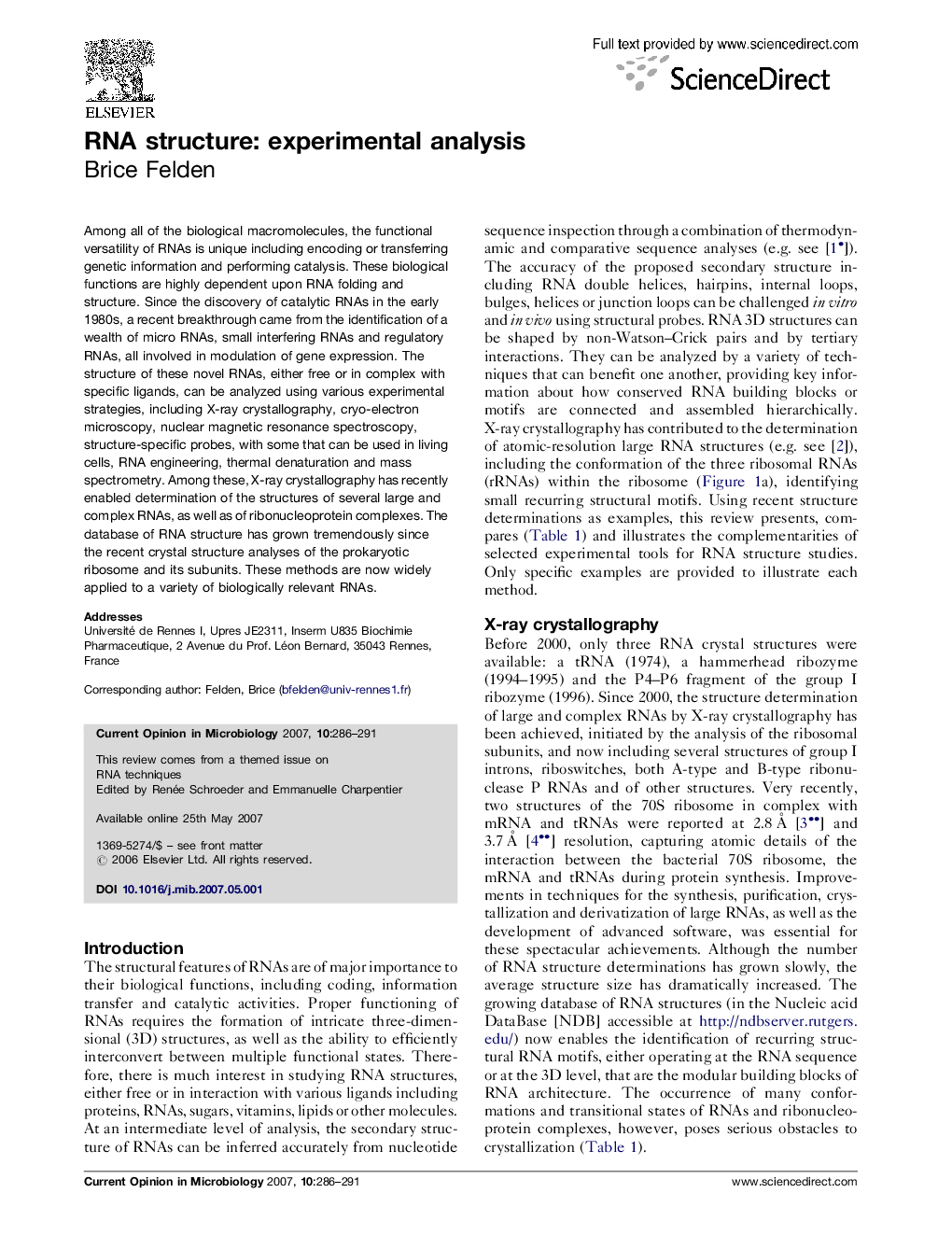| Article ID | Journal | Published Year | Pages | File Type |
|---|---|---|---|---|
| 3399679 | Current Opinion in Microbiology | 2007 | 6 Pages |
Among all of the biological macromolecules, the functional versatility of RNAs is unique including encoding or transferring genetic information and performing catalysis. These biological functions are highly dependent upon RNA folding and structure. Since the discovery of catalytic RNAs in the early 1980s, a recent breakthrough came from the identification of a wealth of micro RNAs, small interfering RNAs and regulatory RNAs, all involved in modulation of gene expression. The structure of these novel RNAs, either free or in complex with specific ligands, can be analyzed using various experimental strategies, including X-ray crystallography, cryo-electron microscopy, nuclear magnetic resonance spectroscopy, structure-specific probes, with some that can be used in living cells, RNA engineering, thermal denaturation and mass spectrometry. Among these, X-ray crystallography has recently enabled determination of the structures of several large and complex RNAs, as well as of ribonucleoprotein complexes. The database of RNA structure has grown tremendously since the recent crystal structure analyses of the prokaryotic ribosome and its subunits. These methods are now widely applied to a variety of biologically relevant RNAs.
